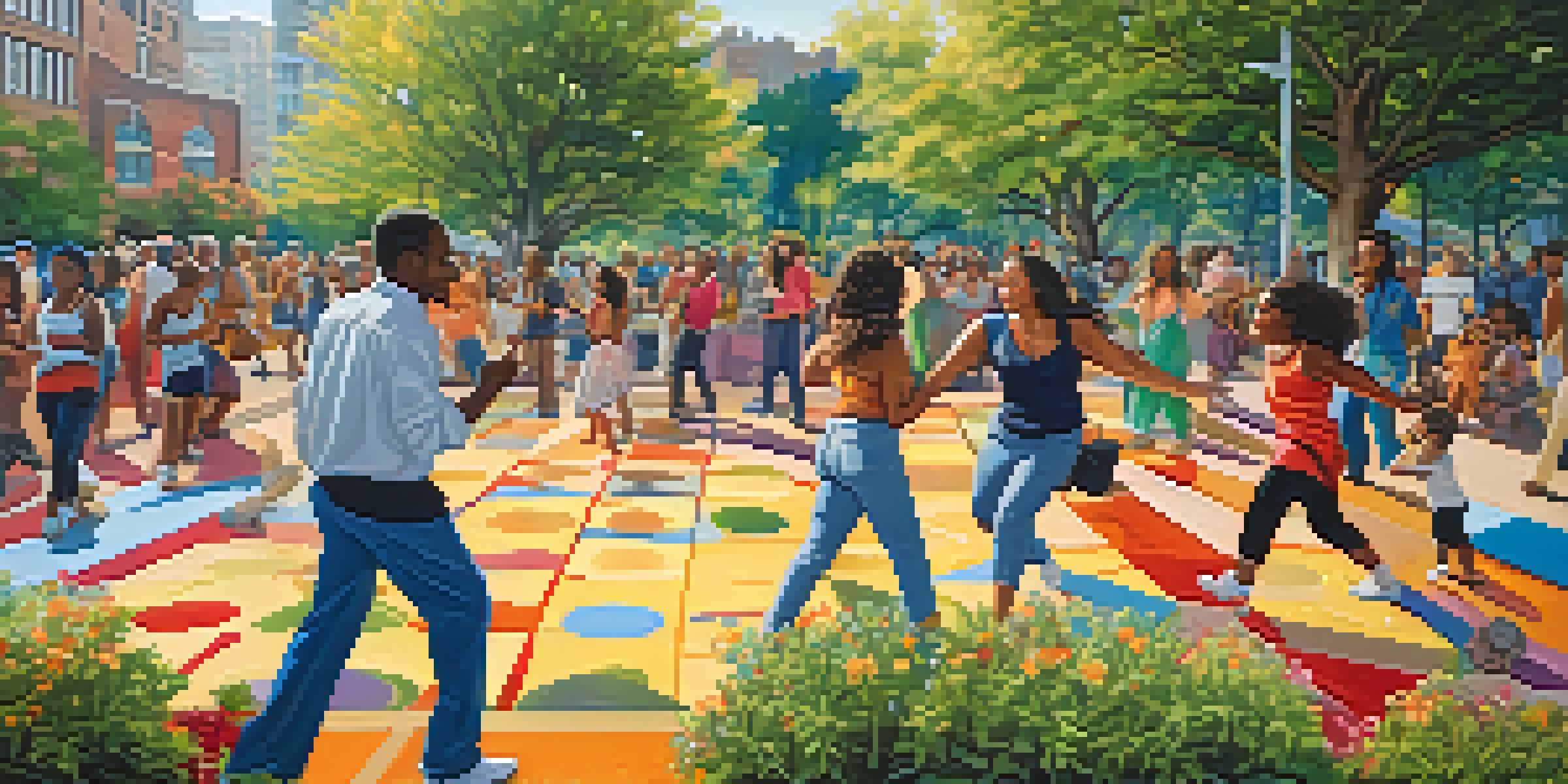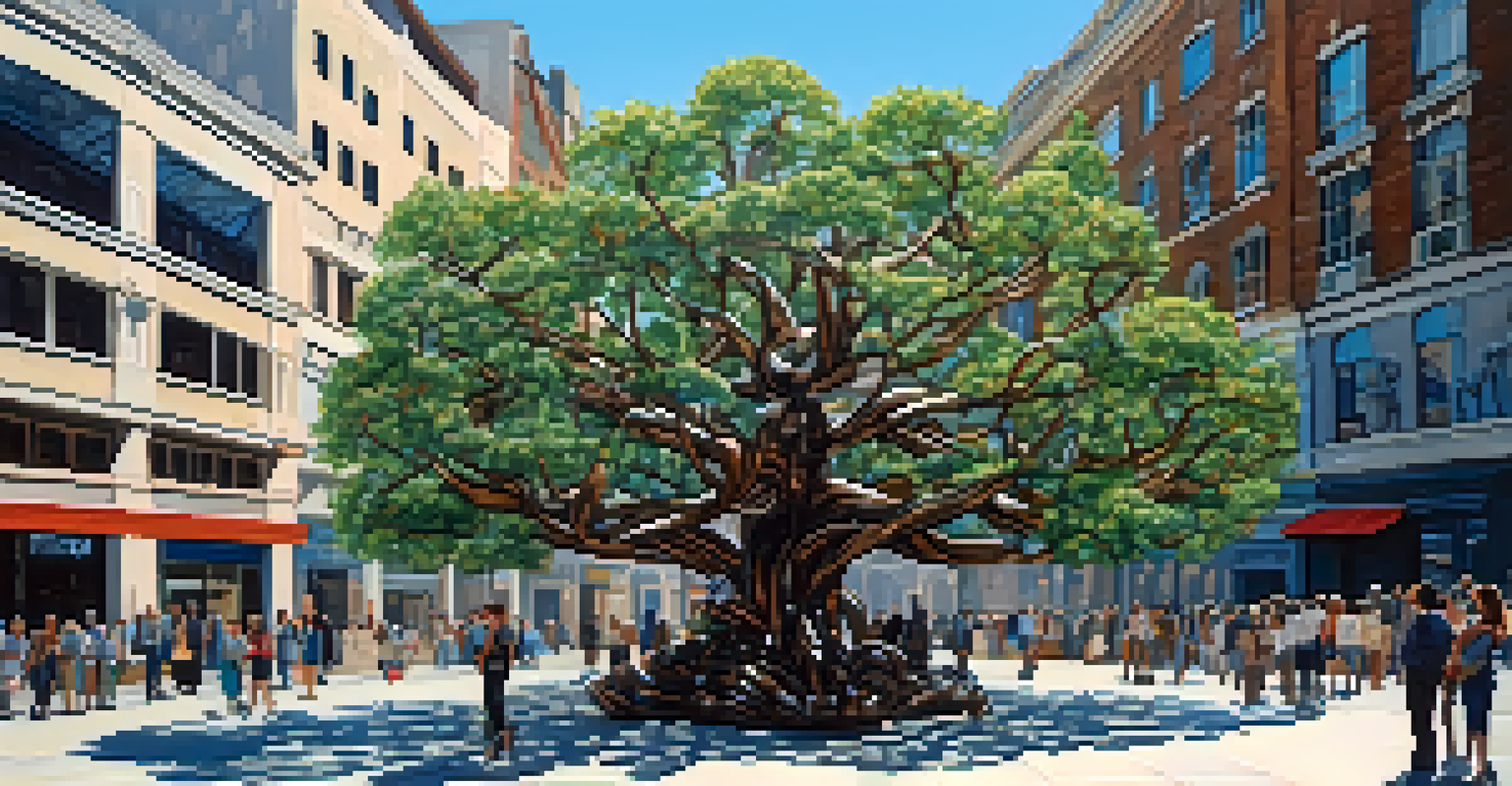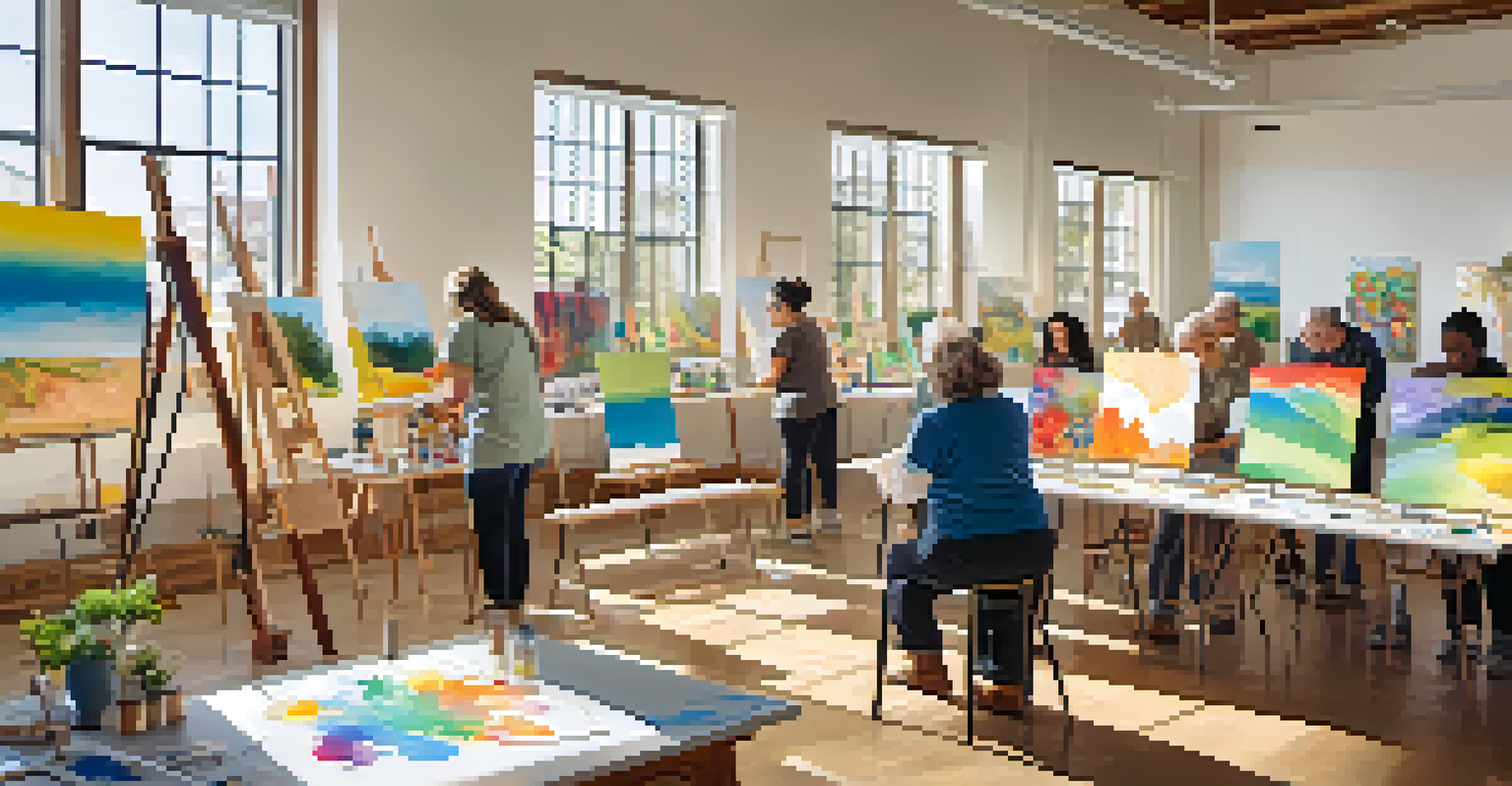Public Art Initiatives: Empowering Local Artists and Communities

Understanding Public Art and Its Importance
Public art refers to artworks that are accessible to the general public and are often displayed in communal spaces like parks or streets. These installations can range from murals to sculptures, and they serve as a reflection of the community's identity and culture. By engaging with art in everyday environments, people can experience creativity in a relatable context.
Art is not what you see, but what you make others see.
One significant aspect of public art is its ability to spark conversations among community members. Art has a unique way of addressing social issues, celebrating diversity, and fostering a sense of belonging. This engagement can lead to stronger community bonds, as residents come together to appreciate shared values and narratives.
Moreover, public art contributes to the beautification of urban landscapes, making cities more vibrant and inviting. It can transform dull spaces into lively areas that attract both locals and tourists, boosting local economies. Simply put, public art is not just about aesthetics; it's about creating an environment where people feel connected and inspired.
The Role of Local Artists in Public Art Initiatives
Local artists are the heartbeat of public art initiatives. They bring unique perspectives and cultural insights that resonate with the community. By involving these artists, initiatives ensure that the artworks are relevant and meaningful, reflecting the local history and traditions that may otherwise be overlooked.

Additionally, empowering local artists through public art initiatives provides them with vital exposure and opportunities. Many emerging artists struggle to find platforms to showcase their work, and public art can serve as a springboard for their careers. Recognition from such projects can lead to commissions, sales, and further artistic collaborations.
Public Art Enhances Community Identity
Public art reflects the community's culture and fosters connections among residents.
Furthermore, when local artists are involved, the community feels a sense of ownership over the art. This connection encourages residents to engage with the pieces and promotes pride in their surroundings. The narrative becomes one of collaboration, where artists and community members work hand in hand to create something truly special.
Community Engagement: The Heart of Public Art Projects
Community engagement is essential for the success of public art initiatives. Before any artwork is created, it's crucial to involve community members in the planning process. This ensures that the art reflects their desires and needs, making it more likely to be embraced and valued.
Public art is a reflection of our society and a catalyst for community engagement.
Workshops, focus groups, and surveys are effective ways to gather input from residents. By listening to their stories and ideas, artists can create pieces that resonate on a personal level. This not only fosters a sense of inclusion but also empowers residents to take pride in their contributions to the project.
Moreover, community engagement can extend beyond planning. Events such as art unveilings or interactive installations encourage ongoing participation, turning art into a collaborative experience. This cycle of engagement enhances social cohesion and fosters a vibrant cultural landscape.
Addressing Social Issues Through Public Art
Public art has the power to address pressing social issues and promote dialogue around them. Artists often tackle subjects such as inequality, environmental concerns, or mental health through their work, using their platforms to raise awareness. This can lead to important conversations that might not otherwise happen in everyday life.
For instance, murals depicting historical events or social movements can serve as educational tools, prompting viewers to think critically about their surroundings. This art becomes a catalyst for change, encouraging community members to reflect on their roles within the society.
Local Artists Drive Engagement
Involving local artists ensures that public art resonates with the community and boosts their careers.
Additionally, public art can provide a voice for marginalized communities, highlighting their stories and struggles. By elevating these narratives, public art initiatives can contribute to social healing and promote empathy among diverse populations.
The Economic Benefits of Public Art Initiatives
Public art does more than beautify a community; it can also stimulate the local economy. When art installations attract visitors, they often lead to increased foot traffic in nearby businesses. Cafes, shops, and galleries can benefit significantly from the boost in customers, creating a thriving local economy.
Moreover, public art initiatives can create job opportunities for local artists and craftsmen. From the initial design phase to installation, various professionals are involved in the process, which can lead to further projects and collaborations down the line. This not only supports the artists but also enriches the community's cultural fabric.
In addition, cities that prioritize public art often see an increase in tourism. Tourists are drawn to unique and vibrant areas, making public art a valuable asset for destination marketing. As a result, municipalities recognize the long-term economic potential of investing in public art initiatives.
Challenges Faced by Public Art Initiatives
Despite their numerous benefits, public art initiatives can face significant challenges. One common issue is securing funding, as artists often rely on grants or community support to bring their visions to life. Without adequate financial backing, many promising projects may never come to fruition.
Additionally, navigating permits and regulations can be a complex process. Local governments may have strict guidelines regarding public installations, and artists must often jump through hoops to gain approval. This can be discouraging for creatives eager to share their work with the community.
Public Art Boosts Local Economies
Art installations attract visitors, benefiting nearby businesses and stimulating economic growth.
Finally, public art can sometimes be met with resistance from community members who may not appreciate the proposed changes. Engaging in open dialogue and educating the public about the benefits of art can help alleviate concerns, but it requires patience and persistence.
Future of Public Art Initiatives
As communities continue to evolve, the future of public art initiatives looks promising. With advancements in technology, artists are exploring new mediums and interactive installations that engage audiences in innovative ways. Augmented reality, for example, can allow viewers to experience art in a whole new dimension, making it more immersive.
Moreover, as social awareness grows, we can expect public art to increasingly reflect contemporary issues. Artists will likely continue to use their platforms to comment on societal challenges, creating pieces that resonate with a global audience. This trend can foster a deeper understanding and connection among diverse communities.

Finally, collaboration between artists, local governments, and residents will be vital in shaping the future of public art. By working together, these stakeholders can create dynamic and inclusive art initiatives that not only beautify spaces but also empower communities for years to come.